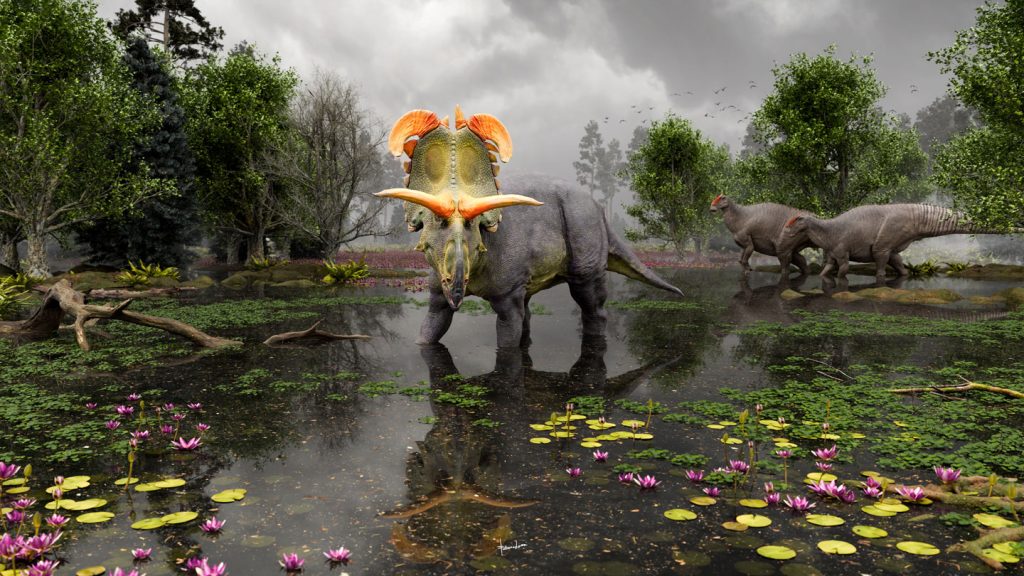A newly discovered dinosaur species named Lokiceratops rangiformis was found in the badlands of Montana, dating back to 78 million years ago when the region was a swampy floodplain. The dinosaur’s name refers to the horned face resembling caribou horns. The most prominent feature of Lokiceratops is its two large bladelike horns with ornamentation along its bony neck frill, distinguishing it from other horned dinosaurs in the region at the same time. These elaborate features suggest that horned dinosaurs used them as ornaments for mating purposes or engaging in dominance displays.
Research conducted by paleontologist Mark Loewen found that Lokiceratops lived in an ancient swampland isolated by a vast seaway, leading to the evolution of distinct features among horned dinosaur species. The discovery of Lokiceratops suggests the highest ceratopsian diversity in the Kennedy Coulee, where several species of horned dinosaurs were found. However, other researchers such as Denver Fowler argue that the differences between Lokiceratops and other similar species like Albertaceratops and Medusaceratops may not indicate separate species but rather signify evolving ornamentations within one species or age-related changes among individuals.
Shawn DeNarie, a ceratopsid expert, notes that Lokiceratops appears closely related to Albertaceratops and Medusaceratops based on their frill ornamentations, but the orientations of the frill horns suggest possible distinct species. The ongoing debate about the status of Lokiceratops as a separate species or a variation of another highlights the complexities of classifying closely related dinosaur specimens. Similar debates have occurred in the past with other ceratopsids like Triceratops and Torosaurus, showing the challenges of determining species identity based on fossil evidence alone.
The differing opinions among paleontologists regarding the classification of Lokiceratops underscore the need for more research to reach a consensus. As more data becomes available, scientists hope to unravel the evolutionary relationships between horned dinosaurs like Lokiceratops to gain a clearer understanding of their diversity and adaptations. While some researchers propose that Lokiceratops is a distinct species, others suggest that it may represent variations within existing species or age-related changes, emphasizing the complexity of studying ancient creatures based on fossil remains. Further studies will shed more light on the unique characteristics of Lokiceratops and its place in the diverse ecosystem of horned dinosaurs in the prehistoric swamplands of North America.


